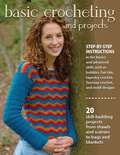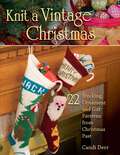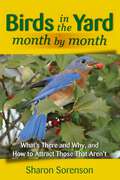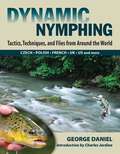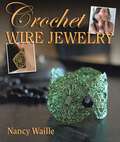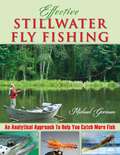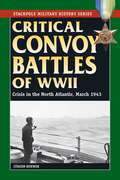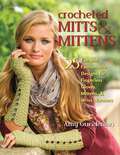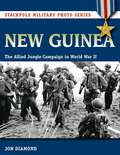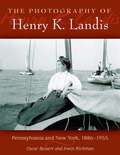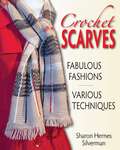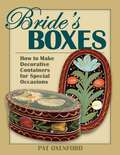- Table View
- List View
Knitted Wraps & Cover-Ups
by Annie ModesittIf cool summer nights or too much air-conditioning give you cold shoulders, take the chill off with fashionable knit accents that will keep you just as warm as you want to be!
First Winter on the Eastern Front (Stackpole Military Photo Series)
by Michael Olive Robert J. EdwardsPhoto chronicle of the German-Soviet campaign on the Eastern Front during its first brutal winter after Operation Barbarossa ground to a halt outside Moscow.
Basic Crocheting and Projects
by Sharon Hernes SilvermanLearn the fundamental skills of crochet with step-by-step instructions and clear, easy-to-follow photographs and illustrations, and then use your new skills to make a variety of crochet designs.
Boneyard Nose Art (Stackpole Military Photo Series)
by Nicholas A. Veronico Jim Dunn Ron StrongPhotos of retired American military aircraft, emphasizing their nose art.
Greetings from the Lincoln Highway
by Brian ButkoSpecial paperback edition for the Lincoln Highway Centennial, with revised text and new images, follows the highway from New York City to San Francisco through 100 years .
Tying Heritage Featherwing Streamers
by Sharon E. WrightLearn the mysteries of the Carrie Stevens method of making Rangeley-style streamers-one of the most enduring, effective, and beautiful baitfish imitations for catching trout.
Weaving Rag Rugs
by Tom KniselyEvery weaver weaves a rag rug--or two, or three. In this long-awaited book, well-known weaver and teacher Tom Knisely shares his knowledge and expertise in this collection of favorite rag rug patterns.
Flies for Western Super Hatches
by Ted Leeson Jim SchollmeyerAuthoritative reference to imitating the important trout food forms in rivers and streams of the West.
50 Nifty Thrifty Upcycled Fashions
by Cynthia AndersonCreate a fun, stylish new wardrobe from tired old pieces and found treasures! Cynthia shows you step-by-step how to take what you have on hand and turn it into unique, eco-friendly fashion.
Knit a Vintage Christmas
by Candi DerrNothing sparks nostalgia like Christmastime. We watch the holiday classics like It's a Wonderful Life and pull out our same decorations each year because we love the memories they bring. The patterns in Knit a Vintage Christmas will both evoke memories of bygone eras and become heirloom decorations you will use year after year. Some of the patterns in this book are classics--vintage patterns updated for the modern knitter--and some are new patterns with a vintage feel. All will inspire your Christmas spirit--now and for years to come!
Birds in the Yard Month by Month
by Sharon SorensonGet to know all the birds that will flock to your yard throughout the year, and how to attract those that need a little extra persuasion to visit.
Dynamic Nymphing
by George DanielAdvanced tight line nymphing tactics, including Czech, Polish, French, Spanish, and American techniques.
Blitzkrieg France 1940 (Stackpole Military Photo Series)
by Michael Olive Robert J. EdwardsPhoto chronicle of the German invasion of France in the spring of 1940.
Crochet Wire Jewelry
by Nancy WailleInstructions and stitch diagrams for 18 beautiful projects using simple crochet techniques Teaches basic crochet stitches and gives advice on working with wire Create unique necklaces, rings, bracelets, belts, bags, and more
Tigrero!
by Sasha SiemelSasha Siemel was a figure of monumental importance on the American hunting-world stage of the 1930s, '40s, '50s, and '60s. He was unique not only as a hunter but also as a man. He is the only known white man to have fought the fierce jungle jaguars of Brazil with a spear, and as a man, he made a stand for decency in everything he did. Siemel published his autobiography, , the basis for this reprint, in 1953, and so great was the demand, the book went through several printings.
Effective Stillwater Fly Fishing
by Michael GormanTop advice from a master stillwater angler and complete hatch information for lakes, ponds, and reservoirs make Effective Stillwater Fly Fishing the perfect resource for fly fishing on stillwaters.
NOLS Canoeing (NOLS Library)
by Alexander MartinExpedition planning and outfitting, including what you'll need on the water and in camp.
Critical Convoy Battles of WWII
by Jurgen RohwerThe Battle of the Atlantic, the longest continuous campaign of World War II, climaxed in 1943, when Germany came closest to interrupting Allied supply lines and perhaps winning the war. In March of that year, German U-boats scored their last great triumph, destroying nearly 150,000 tons of supplies and fuel.
German Soldier in World War II (Stackpole Military Photo Series)
by Michael Olive Robert J. EdwardsA visual history of the German soldier on the Eastern Front of World War II.
Knitting Rugs
by Nola A. Heidbreder Linda PietzA collection of 39 original, creative designs for knitted rugs.
Crocheted Mitts & Mittens
by Amy GundersonNo matter what the season or the outfit, keep your hands covered in high style! From toasty warm mittens with bobbles and ribbing to lacy cotton hand covers perfect for summer fashion, this collection of 25 exciting new patterns has you covered.
New Guinea (Stackpole Military Photo Series)
by Jon DiamondVisual history of the Allied battles for New Guinea during 1942-44.
Photography of Henry K. Landis
by Irwin Richman Oscar BeisertA collection of photographs documenting a diverse array of lifestyles in the late nineteenth and early twentieth centuries in Pennsylvania and New York by amateur photographer Henry K. Landis (1865-1955).
Crochet Scarves
by Sharon Hernes Silverman21 original patterns in a variety of styles, colors, yarns, stitch patterns, and techniques--including traditional crochet, Tunisian crochet, and broomstick lace crochet--for beginning through experienced crocheters
Bride's Boxes
by Pat OxenfordBasic skills for making oval boxes with traditional decorative painting.


